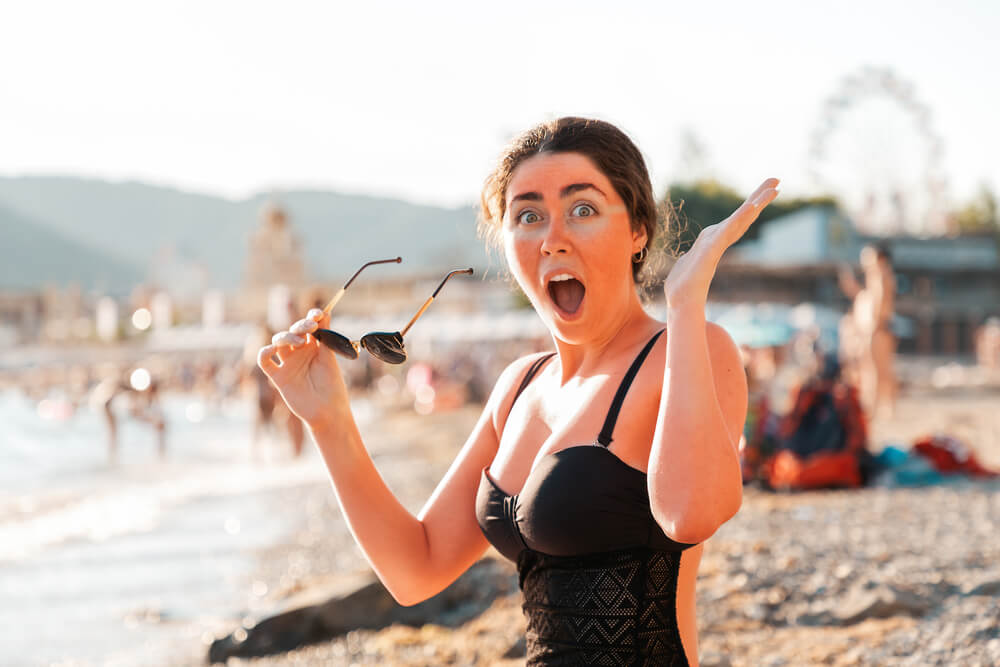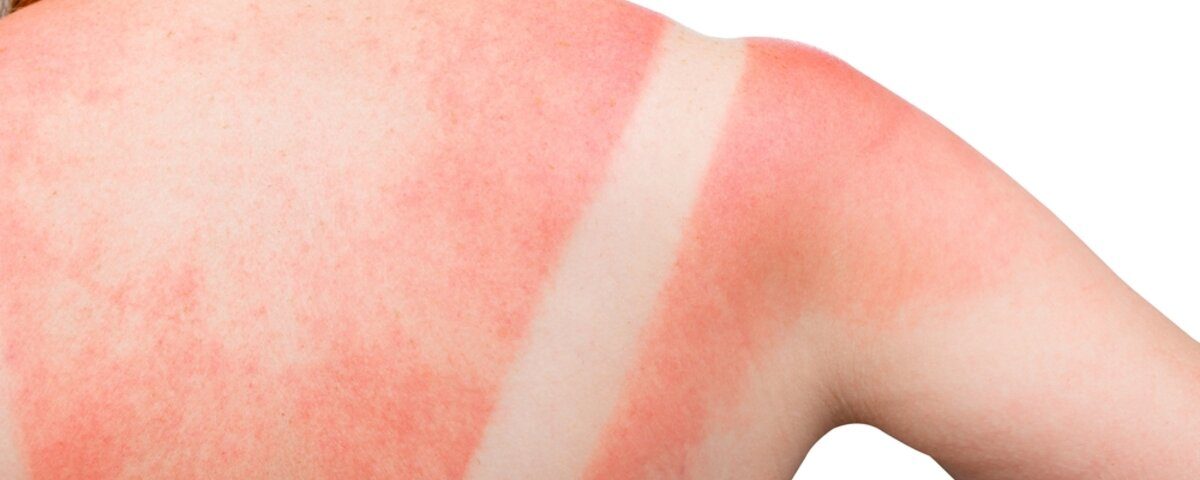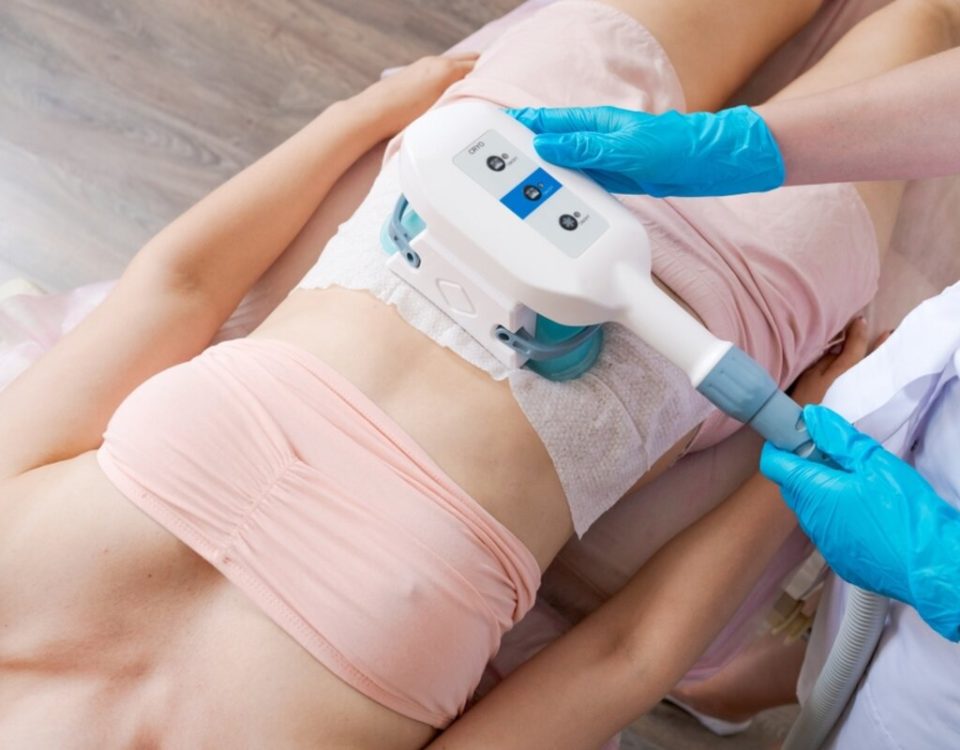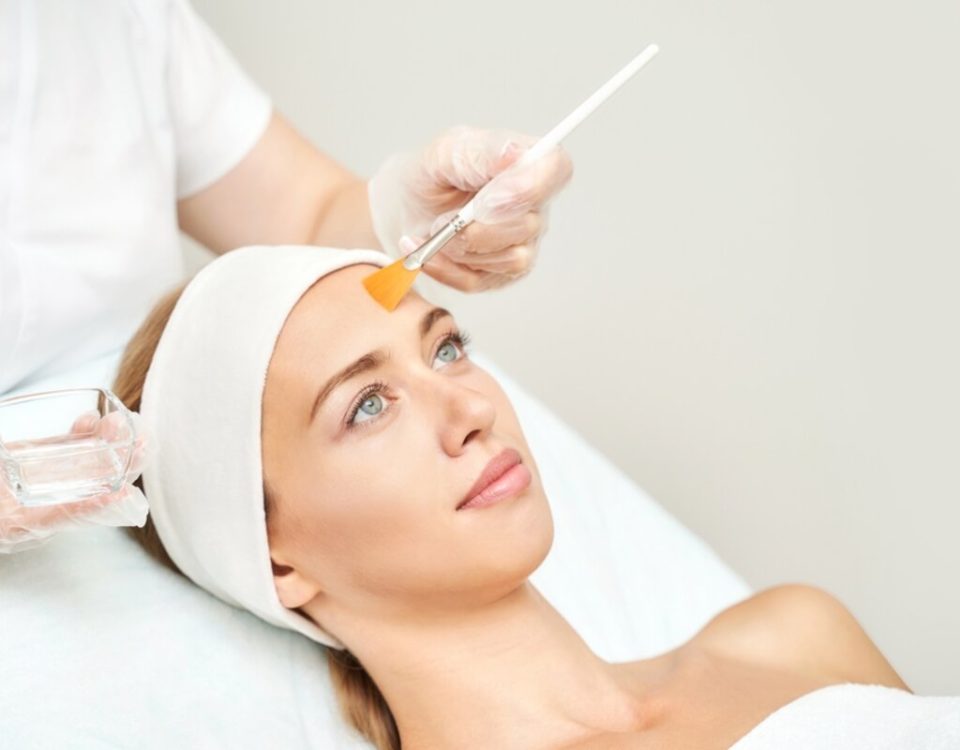
How to Choose the Right Facial for Your Skin Concerns
August 15, 2024
What Types of Sunscreen Are Best for Preventing Sunburn?
October 18, 2024Sunburn, a painful and unsightly consequence of excessive sun exposure, is a radiation burn caused by ultraviolet (UV) rays from the sun or artificial sources like tanning beds. When the skin is subjected to these harmful UV rays, it triggers a defensive mechanism, leading to inflammation, redness, and potential blistering. While sunburns are temporary, the underlying damage to skin cells and DNA can have long-lasting effects, including premature aging and an increased risk of skin cancer.
Severity Levels and Healing Timelines
We all want that radiant glow, but if you aren’t well-protected, a sunburn can do more damage than good. Not to mention, the duration of a sunburn largely depends on its severity, which is typically classified into three degrees:
First-Degree Sunburn
A first-degree sunburn, also known as a minor or superficial burn, affects only the outermost layer of skin, the epidermis. Characterized by redness, pain, and potential peeling, this type of sunburn usually resolves within three to five days. However, the healing process may vary based on individual factors such as skin tone and sensitivity.
Second-Degree Sunburn
More severe than its first-degree counterpart, a second-degree sunburn penetrates deeper into the underlying layer of skin, the dermis. In addition to redness and pain, this type of sunburn often results in swelling, blistering, and rashes. The recovery period for a second-degree sunburn can range from one to three weeks, depending on the extent of the burn and the individual’s healing capacity.
Third-Degree Sunburn
Although rare, third-degree sunburns are the most severe form of radiation burn, affecting not only the epidermis and dermis but also the underlying tissue and fascia. These burns are characterized by extreme blistering, discoloration, and potential skin sloughing or shedding. In some cases, fever may also be present. Due to the extensive damage, third-degree sunburns can take months to heal and often require medical intervention.
Factors Influencing Healing Duration
While the severity of the sunburn plays a significant role in determining its healing timeline, several other factors can contribute to the duration of the burn and its associated symptoms:
- Age: Individuals with younger, more delicate skin, such as children, may experience longer healing times.
- Skin Pigmentation: Those with fair or light skin tones are more susceptible to severe sunburns and may require extended recovery periods.
- Physical Characteristics: People with light-colored eyes, freckles, or fair hair are generally more prone to sunburns and may experience prolonged healing.
- Medications: Certain medications, including antibiotics, acne treatments, and photosensitizing drugs, can increase the risk of sunburns and potentially prolong their duration.
- Pre-Existing Conditions: Individuals with conditions like albinism or xeroderma pigmentosa may be more susceptible to severe sunburns and have longer healing times.
- Environmental Factors: High altitudes, proximity to the equator, and exposure to UV rays during peak hours (10 a.m. to 4 p.m.) can contribute to more severe sunburns and extended recovery periods.
Symptom Progression and Duration
Sunburn symptoms typically follow a predictable pattern, with varying durations for each phase:
Redness
The initial redness associated with sunburn usually appears within two to six hours after sun exposure and reaches its peak intensity around 24 hours later. For mild sunburns, the redness may subside within a few days, while more severe cases can take longer, potentially lasting up to a week or more.
Pain
The pain and discomfort caused by sunburn often begin within six hours of sun exposure and peak around the 24-hour mark. While the pain from a first-degree sunburn typically subsides after 48 hours, second-degree sunburns may cause more prolonged discomfort, lasting up to a week or longer.
Swelling
Swelling, a common symptom of moderate to severe sunburns, can persist for up to two days or longer, depending on the extent of the burn. Anti-inflammatory medications and cool compresses can help alleviate swelling.
Blistering
Blisters, a hallmark of second-degree sunburns, typically appear within 6 to 24 hours after sun exposure and can last up to a week or more, depending on their size and severity. It is crucial not to puncture or break these blisters, as they serve a protective function and aid in the healing process.
Peeling
As the skin begins to heal, peeling is a natural part of the regeneration process of sun damaged skin. This phase typically starts three days after the sunburn and can continue for several days or even weeks, depending on the severity of the burn. It is essential to resist the temptation to peel or pick at the skin, as this can further damage the delicate new skin and prolong the healing process.
Rash or Sun Poisoning
In some cases, a sunburn can progress to a rash or a condition known as sun poisoning, characterized by severe sunburns, rashes, and potential complications like dehydration, fever, and nausea. Sun poisoning typically appears within six hours of sun exposure and can take up to 10 days or even weeks to resolve, depending on the severity of the reaction.
Seeking Medical Attention for Sunburns
While most sunburns can be treated at home with proper care and management, there are instances when seeking medical attention is advisable:
- Severe blistering or large blisters covering a significant portion of the body
- Signs of infection, such as pus, swelling, or tenderness around the blisters
- Fever or other signs of heat exhaustion or dehydration
- Sunburn affecting sensitive areas like the eyes, mouth, or genitals
- Sunburn in infants or young children
- Persistent or worsening symptoms despite home treatment
In these cases, seeking prompt medical evaluation and treatment can help prevent complications and expedite the healing process.
Preventing Sunburn: A Proactive Approach
While sunburns are unpleasant and potentially harmful, they are also largely preventable. Adopting the following preventive measures can significantly reduce the risk of sunburn and associated long-term consequences:
- Use broad-spectrum sunscreen with an SPF of 30 or higher, and reapply it frequently, especially after swimming or sweating.
- Seek shade, particularly during peak sun hours (10 a.m. to 4 p.m.).
- Wear protective clothing, including long-sleeved shirts, pants, and wide-brimmed hats.
- Avoid tanning beds and excessive sun exposure.
- Be mindful of medications that may increase photosensitivity.
- Conduct regular self-examinations and schedule annual skin cancer screenings with a dermatologist.
It’s important to understand the difference between being sun-kissed and sun-protected. By taking proactive steps to protect your skin from harmful UV rays, you can minimize the risk of sunburn and its associated complications, promoting overall skin health, and reducing the likelihood of long-term damage.
Adopting Preventive Measures for Sunburns

Sunburn, while temporary, can have lasting consequences if not properly addressed. By understanding the severity levels, healing timelines, and factors influencing recovery, individuals can better manage and care for their sunburns. Additionally, adopting preventive measures and seeking medical attention when necessary can help mitigate the risks associated with excessive sun exposure. Remember, protecting your skin from harmful UV rays is an investment in your overall health and well-being. For a free consultation on skincare services, contact Spa MD today.
New Clients:
$35 deposit for all new clients
Cancellation/No Show Policy:
$35 fee for all no show, no call and any cancellations less than 24hrs before the start of your appointment.Any prepaid services will be forfeited.
Call us at +1(651)222-4490
Email us at SpaConsultantsMD@gmail.com
or, Schedule a free consultation
We are located on the main level inside of the Blair Arcade Building. We validate parking in the lot connected to the building off of Selby. Be sure to bring your ticket in with you!
Business Hours:
Monday: 9:00am - 8:00pm
Tuesday: 9:00am - 5:00pm
Wednesday: 9:00am - 8:00pm
Thursday: 9:00am - 8:00pm
Friday: 10:00am - 5:00pm
Saturday: 9:00am - 2:00pm (3 Saturdays per month- please call or email for more information)




